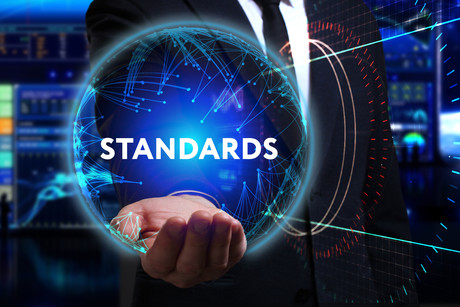Are you up to date with standards?
By Simona Tomevska, Stakeholder Engagement Manager, Energy and Electrotechnology*
Tuesday, 13 March, 2018

Most electricians will have encountered AS/NZS 3000:2007 Electrical installations (Wiring Rules) at some stage in their work, with some in the sector legally required to meet this standard, and it’s near 600 pages. The Wiring Rules comprises two parts, with Part One outlining fundamental safety principles that constitute minimum regulatory requirements for safe electrical installation and Part Two detailing solutions to satisfy fundamental safety principles for electrical installation work.
Given one of the goals of standards is to promote safety, the Wiring Rules seek to protect persons, livestock and property from electric shock, fire and physical injury hazards which may arise from an electrical installation. Also, not only does the standard seek to provide guidance on safe use of the installation, but also to provide guidance so the installation functions correctly for the purpose intended. As one of the fundamental standards for the electrical sector, the Wiring Rules has been around for years and Standards Australia plays a central role in ensuring it remains relevant for many years to come.
Supporting safety
While many in the industry will be familiar with the big ticket items, such as the Wiring Rules, Standards Australia has a number of committees contributing new or revised standards and guidelines.
AS/NZS 3010:2017, Electrical installations – Generating sets, was reviewed in May 2017 to update its earlier 2005 version. The standard outlines requirements for connecting generating sets to an electrical installation for the purpose of supplying electricity at a low voltage (not exceeding 1000 VAC or 1500 VDC).
This standard responds to some environmental factors such as the increasing number of extreme storms and resultant power outages across Australia. In these types of scenarios, on most occasions, it can be necessary to hook backup generators to installations to connect everyone back to the power grid. In addition, the 2017 edition of this standard also expanded on the requirements for the typical connection arrangements for generators, including the addition of colour drawings to assist in identifying the conductors.
In August 2017, safe and reliable plugs and socket outlets were on the agenda with a new edition of AS/NZS 3112, Approval and test specification – Plugs and socket-outlets published. This standard provides guidance for the electrical industry, including manufacturers, test laboratories and regulators with requirements and test methods for plugs and socket outlets.
Some of the major changes included specifications for detachable plug portions, clarification of dimension requirements for plugs and sockets, and updated testing requirements for non-detachable parts and insulation piercing terminals. Not only are manufacturers intended to benefit from this during design and production, but the standard also aims to make it easier for regulators and certifiers to assess compliance.
The breadth of standards across the sector highlights not only the long-term involvement of Standards Australia in working to improve safety, productivity and viability of the electrical industry, but how dynamic the sector has become and the need for standards to reflect these changes.
Distributed electricity — the plan forward
Standards Australia recently announced the completion of the Roadmap for Standards and the Future of Distributed Electricity. The report which accompanies this roadmap will help shape the development of standards to support the transition of electricity networks and technological advances related to electricity distribution and consumption.
The report is a plan of action, and underlines those areas for which consensus exists and are in urgent need of engagement. This report is a result of the work done by Standards Australia ahead of an industry workshop held in August 2016 bringing together industry, consumers and government to express priorities and identify relevant international standards for use in Australia regarding electricity distribution.
Ensuring robust frameworks for management of the electrical network as it changes is critical. Standards are an important element of the overall technical infrastructure, supporting the physical infrastructure so that it functions safely, securely and the way it was intended to deliver electricity to homes and businesses right across Australia.
Battery storage charging forward
In 2017, the development of standards in the energy and electrical sector delved into the battery storage space.
In December 2017, Standards Australia hosted a three-day meeting to progress critical work on the development of DR AS/NZS 5139, Electrical Installations – Safety of battery systems for use with power conversion equipment.
The standard will be issued for a second round of public comment to allow for further community consultation in 2018. Progress on the development of AS/NZS 5139 has been complemented by the recent adoption of AS IEC 62619:2017, Secondary cells and batteries containing alkaline and other non-acid electrolyte – Safety requirements for secondary lithium cells and batteries.
Together with an industry best practice guide, being facilitated by the Electrical Safety Office of the Queensland Government with a number of key industry members, AS IEC 62619:2017 will further support the safe installation of battery systems.
There is an ongoing shift towards a consumer-driven electricity sector and Standards Australia remains at the forefront of bringing all stakeholders together to ensure the shift is safe, effective and productive for the entire sector.
Should businesses choose in-house or third-party manufacturing?
Companies must evaluate their specific needs, goals and capabilities before committing to a...
Focus on Chris Mattner
From being expelled from high school to leading a trailblazing South Australian electrical and...
Harsh penalties for non-compliant smart tech
Last year, the European Union introduced a new regulation that will affect all manufacturers...




